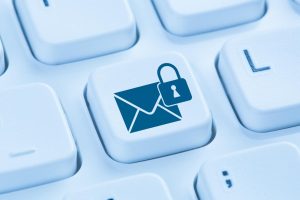Email encryption is a critical component of modern cybersecurity and helps to protect sensitive information from being intercepted and viewed by unauthorised parties. However, with the widespread use of secure email protocols, such as Transport Layer Security (TLS), many users wonder whether encryption of their emails is still necessary.
In this blog, we will explore the purpose of TLS, its limitations, and whether additional encryption is necessary to ensure the security of your emails. By understanding the role of TLS in securing email communications and the potential risks associated with relying solely on this protocol, you can make an informed decision about the level of security you require for your email communications.
What is TLS?
Transport Layer Security (TLS) is a protocol that helps protect the privacy and integrity of data as it is transmitted over the internet. It works by encrypting the data that is being sent, so that even if someone intercepts the transmission, they will not be able to understand or modify the data.
Think of it like a secure wrapping for your online communication, ensuring that the information you’re sharing stays confidential and protected during transmission.
In everyday usage, you may experience TLS as the “https” in a web address or a lock icon in your web browser, indicating that the connection to the website is secure and encrypted with TLS.
Does TLS protect email clients such as Outlook and Gmail?
Yes, most modern email services, including Outlook and Gmail, support TLS, and many will automatically use it whenever a secure connection is available. Sometimes, you may need to manually configure your email client to use TLS, or you may have the option to choose between using TLS or another encryption protocol, such as SSL (Secure Sockets Layer).
When you send an email using one of these services, the email client (such as a web browser or email software) establishes a secure connection with the email server using TLS. This encrypted connection helps protect the contents of the email message from being intercepted and read by unauthorized third parties during transit.
How secure are emails that are sent using TLS?
TLS provides a high level of protection against eavesdropping and tampering with email messages during transit. However, it is not completely foolproof, and the security of an email transmission using TLS can still be compromised in certain circumstances, three of which we’ll discuss below.
Man-in-the-middle attacks
In a man-in-the-middle (MITM) attack, an attacker intercepts and manipulates the communication between two parties, potentially compromising the confidentiality and integrity of the data being transmitted. In the case of email transmissions using TLS, an attacker could intercept the connection and impersonate the email server to the sender or the recipient, allowing them to view or modify the contents of the email message.
Compromised encryption keys
If an attacker is able to obtain the encryption key used by the server to encrypt the email message, they may be able to intercept and decrypt the message, even if TLS is being used. This can occur if the key is stored on the server in an unsecured manner or if the attacker is able to steal the key through other means.
Vulnerabilities in the TLS implementation
Vulnerabilities in the implementation of the TLS protocol itself can be exploited by attackers to compromise the security of encrypted email transmissions. For example, if a bug is found in the implementation of the protocol, an attacker could exploit this bug to intercept and decrypt encrypted email messages.
That being said, it is much more difficult to intercept and read an email sent using TLS than one sent without any encryption. The use of TLS helps to protect against casual eavesdropping and tampering and is considered a best practice for securing email communications.
However, while using TLS provides a high level of security for email transmissions, it is not a guarantee of complete security. Additional measures should be taken to protect against potential threats, especially if you share highly sensitive information such as PII or credit card details. If you want to ensure the confidentiality of the contents of an email message, in addition to using TLS for secure transport, you should also use an email encryption tool such as Galaxkey. This provides ultra-secure end-to-end encryption, ensuring that only the intended recipient can read the contents of the email. It also has full audibility, ensuring compliance with your industry regulations.



